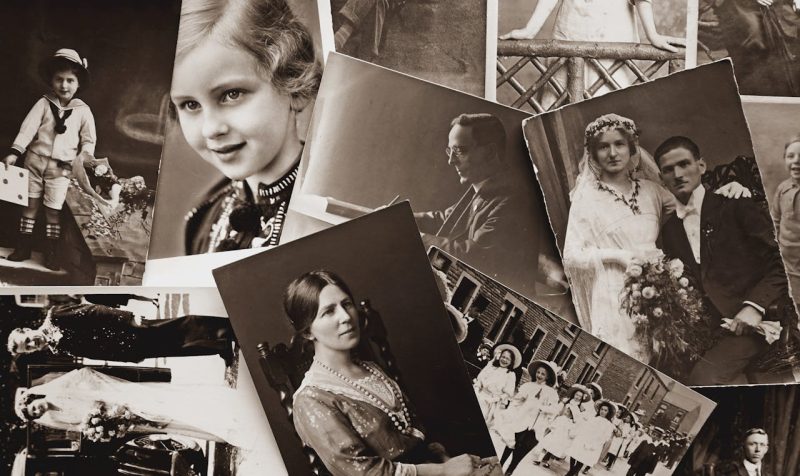In 1688, a curious medical mystery befell the Swiss mercenaries fighting in France. Soldiers, plagued by homesickness and longing, displayed a range of symptoms, from listlessness to digestive issues. This phenomenon, later dubbed “nostalgia,” (from Greek nostos ‘return home’ + algos ‘pain’) would spark centuries of debate, revealing itself as far more than just a medical curiosity. Today, nostalgia is rather well-known.
It can be triggered by many different things. A dusty attic that is brimming with old photos, forgotten toys, old trophies, and your mother’s wedding dress. A familiar song, the scent of baking cookies, and a treasured childhood toy.
Like scattered puzzle pieces, these triggers unlock a flood of positive memories and emotions, weaving a tapestry of belonging and connection that transcends the present. Today, as loneliness becomes an increasingly prevalent issue, how nostalgia can help loneliness has taken on therapeutic potential and renewed significance.
Read more to discover the restorative power of nostalgia. Explore its profound effects, and learn how it can combat loneliness.
The neuro-psycho-physiological aspects of loneliness
Loneliness isn’t merely sadness — it’s a lack of social connection, a yearning for belonging, often accompanied by feelings of isolation and exclusion. Research highlights the detrimental effects of loneliness on both mental and physical health: it weakens the immune system, increases stress hormones, and can even lead to depression and anxiety.
But amidst this bleak landscape, a glimmer of hope emerges from the past. Nostalgia, often associated with warm, fuzzy feelings and bittersweet memories, offers a unique coping mechanism for loneliness. Nostalgia allows individuals to reconnect with who were, are, and who they can be.
The human brain is wired for autobiographical memories. The “lifespan retrieval curve” shows a distinct peak in memory recall around middle age, known as the “reminiscence bump.” This bump coincides with a crucial stage in self-identity formation, suggesting that revisiting past experiences helps solidify the sense of self.
Loneliness, however, can distort this process. The “social brain,” responsible for processing social interactions and relationships, becomes skewed. Perceived social distance increases, and even positive social cues can be misinterpreted. Loneliness activates the same pain pathways in the brain as physical pain, highlighting the urgent need for connection.
The allure of nostalgia
Increasingly driven by convenience and material pursuits, the world often sees technology as the key to connection. However, the very tools that connect you are often the ones that leave you feeling isolated. Curated online personas and the constant influx of information can create a sense of inadequacy and disconnect you from everyone else.
Nostalgia can serve as a restorative coping mechanism for emotional distress. While loneliness directly decreased perceived social support, its indirect impact was to enhance perceived social support through nostalgia.
Studies have shown that reliving positive memories through sights, sounds, and smells associated with them is particularly effective. The act of reminiscing about shared experiences with loved ones strengthens existing bonds and fosters a sense of connection. Sharing nostalgic stories also allows you to connect on a deeper level, fostering empathy and understanding.
Moreover, nostalgia can offer a positive lens through which to view the present. By reflecting on past successes and moments of overcoming challenges, you can gain a renewed sense of confidence and resilience. This positive perspective can help you navigate feelings of loneliness and isolation in the present.
Lastly, reminiscing about past experiences helps you find meaning and purpose in your present life. By connecting the dots between past experiences and present circumstances, you better understand yourself and your journey. It cultivates a sense of purpose that combats feelings of isolation and loneliness.
Immersing yourself in a song that reminds you of a happy childhood trip, smelling a familiar scent, and sharing and listening to stories can trigger a cascade of positive emotions, including feelings of warmth and belonging. These coping mechanisms create a protective buffer against the loneliness trap.
Practical strategies for tapping into nostalgia to help loneliness
But nostalgia isn’t just about passive reminiscing. It can be a powerful tool for positive change. Recent research suggests that engaging in personally meaningful, rewarding, nostalgic experiences can boost psychological well-being. It can enhance self-esteem, foster a sense of belonging, and even encourage prosocial behavior.
Research has proposed that nostalgia enhances psychological well-being by fostering authenticity. Day-to-day practices can facilitate a sense of comfort, resilience, and emotional regulation. By integrating nostalgic activities into daily routines, individuals can enrich their experiences and cultivate lasting positive effects on their overall well-being.
Rediscovering connection through shared memories
An insightful remark from The Office states: “I wish there was a way to know you’re in ‘the good old days’ before you’ve actually left them.” This underscores the common tendency for individuals to overlook the significance of experiences in the present moment, only to appreciate them more fondly in hindsight.
The concept of “Rosy Retrospection” encapsulates the idea that people often fail to recognize the value of experiences at the moment but tend to view them more favorably in hindsight. Research supports this phenomenon, suggesting that embracing the inevitability of longing for the past can motivate individuals to cultivate joyful experiences and memories in the present.
Engaging in simple acts like conversing with a barista or participating in volunteer activities can enrich daily life and contribute to the formation of cherished nostalgic memories. Recognizing the potential of ordinary moments to become extraordinary in hindsight empowers individuals to invest more fully in their present interactions.
Utilizing technology and social platforms
A study from the University of Gothenburg and University West highlights the evolving role of social media in shaping and sharing memories, a phenomenon termed “social media nostalgizing.”
Users actively seek out nostalgic content, treating themselves to trips down memory lane. Platforms increasingly offer features like personalized photo albums and reminders of past posts, fostering nostalgic experiences.
These features facilitate reminiscing and reconnections with old friends through shared memories. This long-term study offers insights into how users’ usage and attitudes toward social media have evolved, emphasizing the role of technology in revisiting and sharing memories.
Unleashing the positive emotional impact of nostalgia
A study published in Self and Identity in 2014 uncovered the dual benefits of nostalgia: not only does it evoke positive emotions, but it also fosters personal development.
This growth is largely attributed to an increase in positive self-esteem, a psychological asset that nostalgia reinforces. Intriguingly, the study also revealed that nostalgia strengthens feelings of belongingness and imbues life with a sense of purpose, both essential in mitigating loneliness.
For those feeling adrift or lacking purpose, nostalgia can provide a significant emotional anchor. By reframing past experiences and memories, individuals regain a sense of agency in their narratives, mitigating the sense of being peripheral characters in their own lives.
The Hero’s Journey Method offers a structured approach to harnessing nostalgia for personal growth and meaning-making. By reflecting on past experiences, setting goals, and leveraging insights from challenges overcome, individuals can construct narratives that highlight their growth and foster connections within their communities.
Mindful engagement with nostalgia is thus a potent tool for combating loneliness and cultivating a sense of purpose.
Be wary of potential downsides
While nostalgia can be a powerful tool for reconnecting with cherished memories, it’s important to acknowledge its potential downsides.
Excessive dwelling on the past can sometimes lead to feelings of sadness or a sense of longing for what once was, detracting from the present moment. To maintain a healthy relationship with nostalgia, it’s crucial to strike a balance between reminiscing and embracing the present.
Focusing on positive, personally meaningful memories can help mitigate any negative emotions associated with nostalgia.
Additionally, it’s essential to recognize that while social media and technology can facilitate nostalgic experiences, real-life connections remain the best forms of connection for overall well-being. Spending quality time with loved ones and fostering meaningful relationships offline can provide a more fulfilling sense of connection and belonging.
In conclusion
This doesn’t imply that nostalgia is a magic cure-all for loneliness. It’s crucial to remember that real-life connections are essential for long-term well-being. However, nostalgia can be a valuable tool in your emotional arsenal, offering solace, reminding you of your inherent social nature, and motivating you to reach out and build meaningful connections.
So, the next time you feel the pangs of loneliness, don’t shy away from the past. Dust off that old photo album, put on a favorite childhood song, or visit a place from your memories. Let the echoes of the past remind you of the love, laughter, and connections that have shaped you. Remember, the past can hold the key to unlocking a more hopeful and connected present.
If you would like to see more resources on social disconnection, check out the Personal Resilience Science Labs. The lab uses the research of the Institute for Life Management Science Labs to produce courses, certifications, podcasts, videos, and other tools. Visit the Personal Resilience Science Labs today.
Photo by Suzy Hazelwood on Pexels


